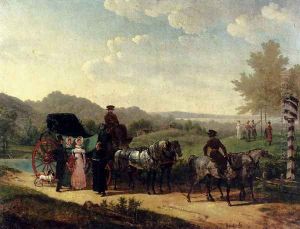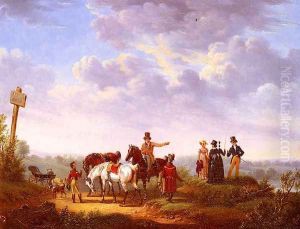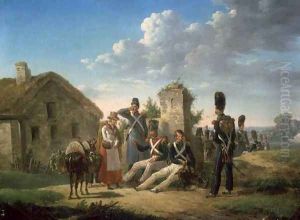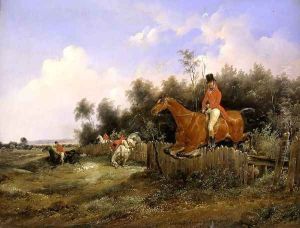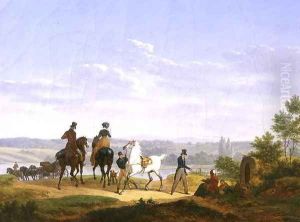Bernard Edouard Swebach Paintings
Bernard Edouard Swebach, also known as Jacques François Joseph Swebach, was a distinguished French painter, draughtsman, and engraver born in 1764 in Metz, France. His artistic journey began under the tutelage of his father, François Antoine Swebach Desfontaines, an esteemed artist in his own right, from whom Bernard Edouard inherited a profound artistic legacy. Swebach's career flourished during a tumultuous period in French history, which spanned the final decades of the Ancien Régime, the French Revolution, and the Napoleonic era, finally culminating in the Restoration period.
Swebach's oeuvre is characterized by its vivid depiction of military and historical scenes, landscapes, and genre paintings. His ability to capture the dynamism and drama of military engagements, as well as the serene beauty of rural life, earned him significant acclaim. He became particularly renowned for his detailed and lively representations of battles and equestrian subjects, often highlighting the Napoleonic wars, which were a central theme of his work during that era. Swebach's paintings not only reflect the tumult and valor of military life but also offer a glimpse into the societal changes and everyday experiences of his time.
Throughout his career, Bernard Edouard Swebach exhibited at the Salon, the official art exhibition of the Académie des Beaux-Arts in Paris, where he garnered attention and praise from both critics and the public. His works were sought after by collectors and art enthusiasts across Europe, contributing to his reputation as one of the foremost painters of his generation in the depiction of military subjects.
Beyond painting, Swebach was also an accomplished engraver and illustrator, contributing to books and periodicals of his time, which helped disseminate his work to a broader audience. His engravings, characterized by their precision and attention to detail, played a crucial role in the popularization of his thematic focus on military and historical events.
Bernard Edouard Swebach's legacy extends beyond his contributions to military and historical painting. He was a pivotal figure in the transition from the neoclassical to the romantic movements in French art, influencing subsequent generations of artists with his dynamic compositions and evocative use of color. He passed away in 1828 in Paris, leaving behind a body of work that continues to be celebrated for its historical significance and artistic merit.
